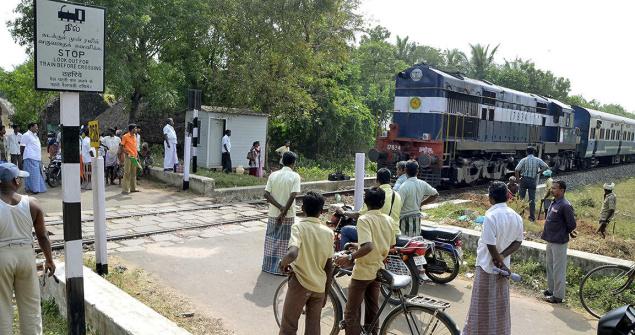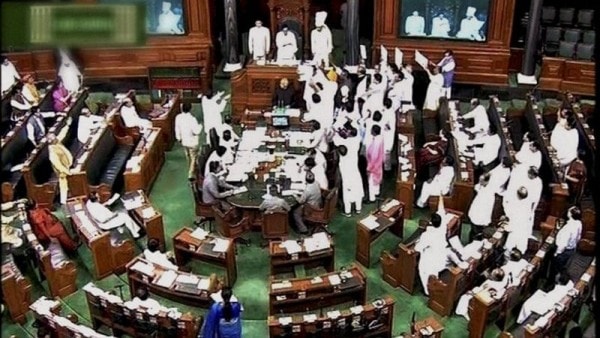IASbaba's Daily Current Affairs Analysis, IASbaba's Daily Current Affairs August 2015, National, UPSC
Archives
IASbaba’s Daily Current Affairs- 11th August, 2015
NATIONAL
Railway safety in India: A keen look
- The recent incident of twin train derailment in Madhya Pradesh has provoked people to ask the question, are railways safe in India?
- Between January 2007 and September 2011, more than 2,000 people have died in 738 railway accidents across the country.

A statistical look into railway accidents and safety:
- Derailments constitute 50% of the total rail accidents, followed by 36% accidents at unmanned level crossings gates, 5% collisions, 4% accidents at man level crossing gates , 2% fire accidents and 3% due to misc reasons.
- Collisions which are 5% of total tally are responsible for 24% of total deaths and 26% of total injuries.
- Derailments with half of total train accidents constitutes to 4% deaths and 27% injuries.
- Unmanned level crossing gates accounted to 59% of total deaths and 39% injuries.
- Fire accidents resulted in 2% deaths and 1% injuries.
Reasons for lack of railway safety:
- Lack of fire detection systems:Most trains in India still lack effective systems
 to detect smoke and fire. In some trains, the fire alarm systems have been installed in air-conditioned coaches, while other compartments have been neglected. In open compartments, it is more difficult to detect smoke.
to detect smoke and fire. In some trains, the fire alarm systems have been installed in air-conditioned coaches, while other compartments have been neglected. In open compartments, it is more difficult to detect smoke. - Lack of anti-collision technologies: These are devices that automatically halt the train if it overshoots a red signal. “India, which has the world’s fourth-largest railway network after the U.S. China and Russia, still doesn’t have such safety devices.
Such technologies could have helped prevent the 32 train collisions that took place in India since 2008, according to official figures.
- Staff deficit: Speeding and skipping red signals are the main causes of concern, human error is another common cause of accidents. The reason for this is partly that there is a shortage of staff, meaning that workers are often overworked.
According to official figures, there were 18 train accidents last year due to faults of drivers and other railway staff.
- Inappropriate maintenance of tracks: A significant number of accidents in India are caused by derailments and for this derelict tracks are to be blamed.
There were 273 train derailments in India since 2008, 28 of which took place last year, according to official figures.
A step towards railway safety:
Anil Kakodkar committee recommendations on railway safety would be appropriate at this backdrop .
- The three vital functions of rule making, operations and the regulation are all vested in the Railway Board. There is need for an independent mechanism for safety regulation. Creation of a statutory Railway Safety Authority with enough powers to have a safety oversight on the operational mode of Railways would do the need.
- The Research Design and Standards Organization (RDSO), the apex technical wing of the Railways, is highly constrained. This has hampered the ability of the system to internalize emerging technologies. Restructuring of RDSO for greater empowerment is the need of the hour.
- The adoption of an Advanced Signalling System (akin to the European Train Control System) for the entire trunk route length of 19,000 km within 5 years.
- All Level Crossings (both manned and unmanned) should be eliminated over a fixed period of time say five years.
- Also a switch over from the ICF (Integral Coach Factory) design coaches to the much safer LHB(Linke Hofmann Busch) German design coaches.
Connecting the dots:
- Enumerate the various safety concerns present in Indian railways and suggest measures to overcome the same.
- Implementation of Anil Kakodkar’s committee recommendations on rail safety act as a game changer w.r.t to railway safety in India. Critically analyse.
Parliament stalemate : An analysis
- The monsoon session of the 16thLokSabha which started from 21st July is going
 to end on 13th August 2015.
to end on 13th August 2015. - The legislative agenda in this session included 11 legislative bills that had to be taken up for consideration which are currently pending in Parliament and 9 new Bills that were proposed to be introduced and passed. Three Bills were listed for withdrawal.
- The Parliament which had to discuss on important legislations like GST, Medical Health Care bill etc suffered huge losses with repeated adjournments demanded by the opposition.
- NDTV claims that a washout of the monsoon session would waste Rs 35 crore of taxpayer money. Times Now claimed the figure to be Rs 260 crore.
Why the present stalemate?
- The government has a clear majority in the LokSabha and it lacks in RajyaSabha.
- There are mainly two reasons for stalemate.
- The government has stuck up with scandals like the Vyapam scam, Lalitgate etc and the opposition is demanding sacking of the ministers involved.
- With respect to content of the bills which are proposed to be taken up for consideration during the session like the GST bill , land acquisition amendment bill etc.
Analysis of 15thloksabha:
- During the 15th LokSabha, frequent disruptions of Parliamentary proceedings had resulted in the LokSabha working for 61% and RajyaSabha for 66% of its scheduled time. In comparison, the 13th and 14th LokSabhas worked for 91% and 87%,
- The 15th LokSabha passed 179 Bills of the 328 Bills during its five year tenure. This is the least number of Bills passed by a full five year term LokSabha. In comparison, the 13th and 14th LokSabhas had passed 297 and 248 Bills, respectively.
- Of the 116 Bills, other than finance and appropriation Bills, passed by the 15th LokSabha, a significant percentage of Bills were passed without adequate debate in the House. In the LokSabha, 36% of the total Bills passed were debated for less than thirty minutes. Of these, 20 Bills were passed in less than five minutes.
In the RajyaSabha, 38% of the total Bills passed were debated for more than two hours, and 7 Bills were debated for less than five minutes.
- During the 15th LokSabha, Question Hour was a major casualty to disruptions. Question Hour is the first hour of every Parliamentary sitting, devoted to questions posed by MPs, to be orally answered by Ministers.
LokSabha lost 61% of the time scheduled for Question Hour and RajyaSabha lost 59%.
- In the last five years, only 29 % of total productive time was spent on discussing the Budget , which is an important tool in hands of parliament to make executive financially accountable.
A bigger picture:
- The main reason for such parliamentary stalemate lies in the parliament itself, its composition i.e the MP’s who make up the parliament.
- In India politics has become a business. People get into politics to protect their business establishment. While doing so they tend to forget the purpose for which they have been elected by the people.
- Criminalization of politics is a major hindrance in achieving an urbane parliamentary behaviour.
In 15thloksabha, around 30% of MPs had criminal charges and around 14% of the MPs had serious criminal charges on them.
The current LokSabha has 76 MPs accused of multiple serious crimes with an average of three cases each.
Way Forward:
- Indian parliament is evolving itself over the years. Supreme Court’s decision wrt criminalization of politics is a welcome step in this regard.
- Common man’s perspective -What best one can do here is to elect deserving candidates to the LokSabha who heeds and provides solution to the problems of a common man.
- Election commission’s work in preventing election malpractices should be praised and the work should be continued and strengthened further.
Connecting the dots:
- Parliament over the years is losing its role as “guardian of democracy”. Critically analyse.
- How does the present-stale mate impact the Indian economy and general public in particular? Your thoughts on ‘Criminalization of Politics’.
- What are the instruments or provisions available in the constitution to ensure smooth functioning of the Parliament? How effective are they?
- The role of individual MPs (Members of Parliament) has diminished over the years and as a result healthy constructive debates on policy issues are not usually witnessed. How far can this be attributed to the anti-defection law, which was legislated but with a different intention? (2013- GS Paper 2)














